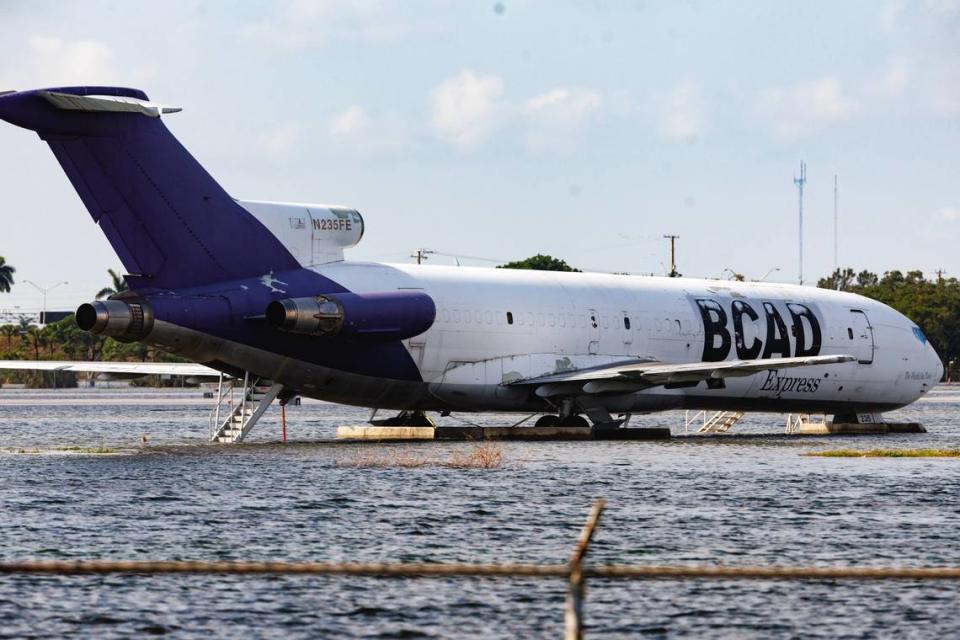A freak storm, but also the future? Fort Lauderdale airport’s flooding mess
Flooding has long been a problem at low-lying and practically beachfront Fort Lauderdale-Hollywood International Airport.
But decades of complaints of puddles have nothing on what happened this week, after a freak storm dumped record-breaking rain on the airport, trapping passengers inside and shutting down operations for more than a day.
Experts say the deluge was record-breaking, but not unforeseeable.

Modeling of a 1-in-1,000-year rain event, as the National Weather Service has dubbed this, lines up pretty well with what hundreds of social media videos show: submerged runaways, impassible roads and a moat of water ringing the airport. More than 2 feet of rain drenched Fort Lauderdale Wednesday, a record rainfall for one 24-hour period.
READ MORE: Climate change could make freak events like Fort Lauderdale’s flooding more common
Albert Slap, head of Coastal Risk Consulting, a private company that explains a specific property’s risk of flooding, extreme heat and wildfires, said his firm’s report showed that the airport was always in danger of something like this. The airport was built at a low elevation, close to the ocean, and it scored a direct hit from an intense amount of rain, more than any other part of the region.
“It’s not a surprise,” he said. “This does not take into account how good or bad the stormwater system is. The whole place flooded.”
Slap’s modeling, which is based on satellite mapping, suggests some spots may have flooded up to 6 feet.
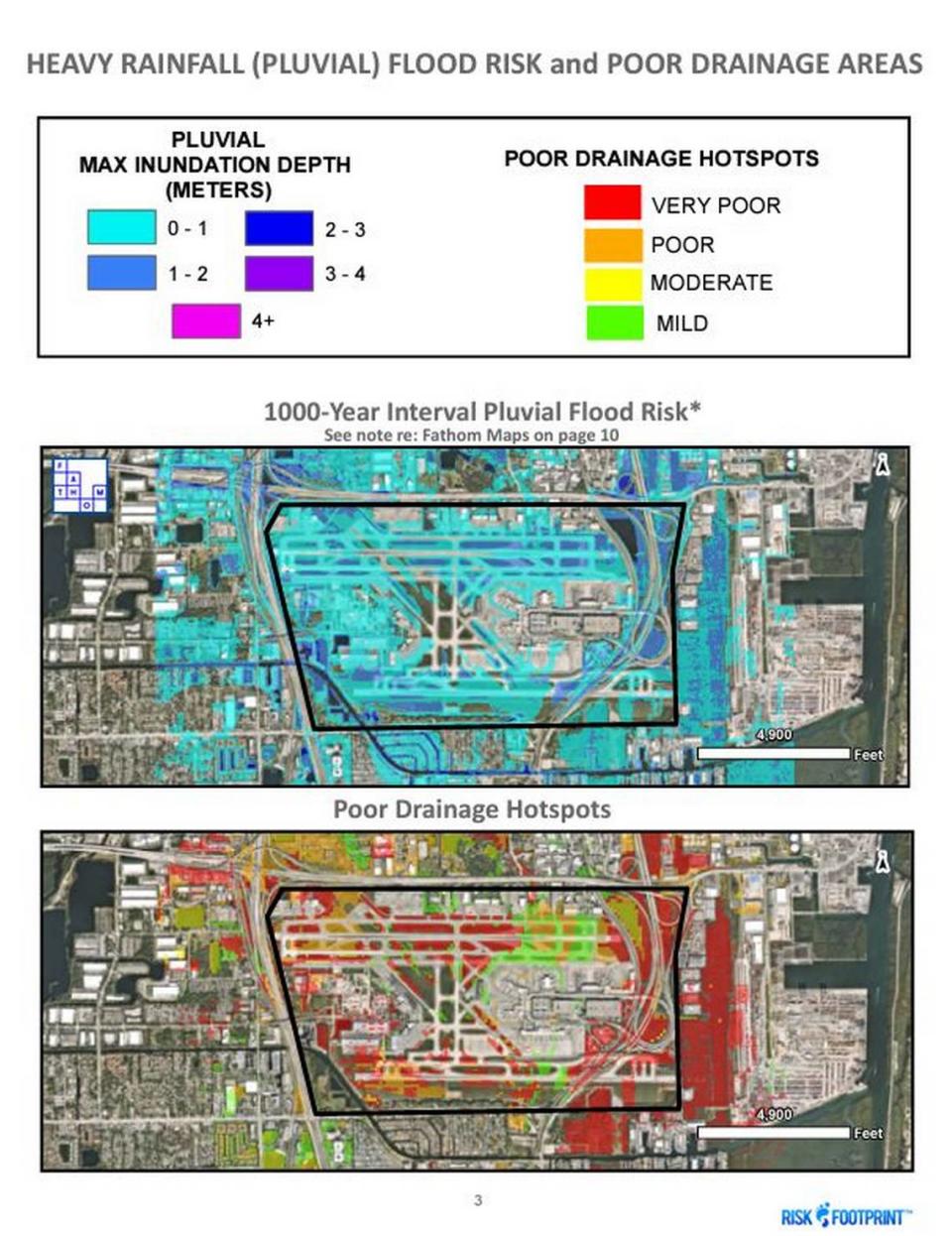
Costly fixes
Better drainage was on the agenda when Broward County spent $95 million upgrading the north runway in 2019. The airport has two runways.
Built before World War II when the airport was the Fort Lauderdale Naval Air Station, the runway off I-595 was upgraded with a string of improvements targeting some spots where water pooling was an issue and upgrades to help rain clear the landing and takeoff areas. But language in county planning documents doesn’t come close to the deluge the north runway faced this week.
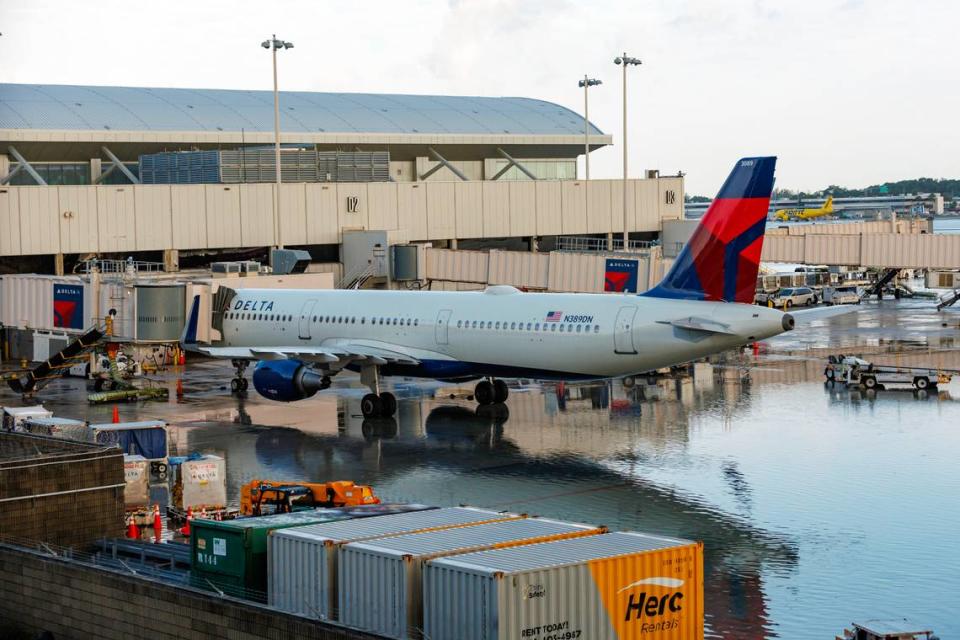
“The area off the east end of Runway 10L-28R will be filled in the lowest areas to help alleviate the standing water during the rainy season,” read a 2017 summary of the plans. “This project will yield a net decrease in impervious area and therefore should reduce stormwater runoff and result in a slight improvement in the overall drainage characteristics of the airfield.”
Florida regularly includes the airport in resiliency grants managed by the state Department of Environmental Protection. The 2022-23 list of “Flooding and Sea Level Rise Resilience” grants includes $1.6 million for a pump station at the Fort Lauderdale airport, and $3 million for a new stormwater system there.
Good news! Fort Lauderdale-Hollywood Int'l Airport (FLL) is open with operations starting at 9am Friday. Looks like there is still significant flooding, but the runways are mostly clear. More storms possible after 3pm. pic.twitter.com/B8cnpnMwXm
— Brandon Orr (@BrandonOrrWPLG) April 14, 2023
FLL’s most recent master plan, from 2020, calls for the airport to spend $42 million on stormwater improvements, largely funded by bonds. Last year, the county’s aviation department won two matching grants from the state to start hacking away at that project list for more than $3.3 million.
Pradeep Nagarajan, technical director in the GHD engineering and environmental firm’s Atlanta office, said local governments are moving toward more advanced designs to mitigate flooding amplified by a changing climate, but there’s only so much that can be done when catastrophic weather hits.
“You don’t have a stormwater solution for 24 inches of rain over a short period of time,” he said.
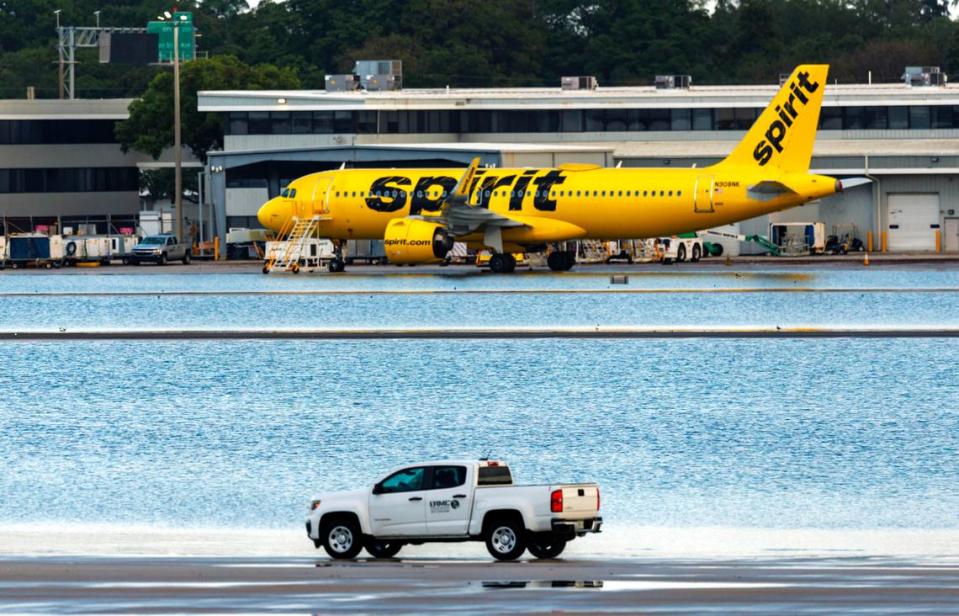
More flooding in the future
FLL consistently makes it to the top of lists of airports most vulnerable to climate change due to its low elevation and proximity to the coast. Miami International Airport, Key West International Airport and St. Pete-Clearwater International Airport also regularly appear on those same lists.
READ MORE: ‘It’s all gone.’ How families are coping in a Broward community that went underwater
In a recently published report by the Brookings Institute, titled “America’s airports aren’t ready for climate change,” FLL is name-checked as a spot with high future flood risk.
“The shifting baseline of chronic flooding conditions has negative implications for the airport’s ability to weather more severe flooding associated with acute events,” the report read.
The Coastal Risk Consulting report on the Fort Lauderdale airport shows the same vision of the future, using NOAA’s intermediate high projection for sea level rise.
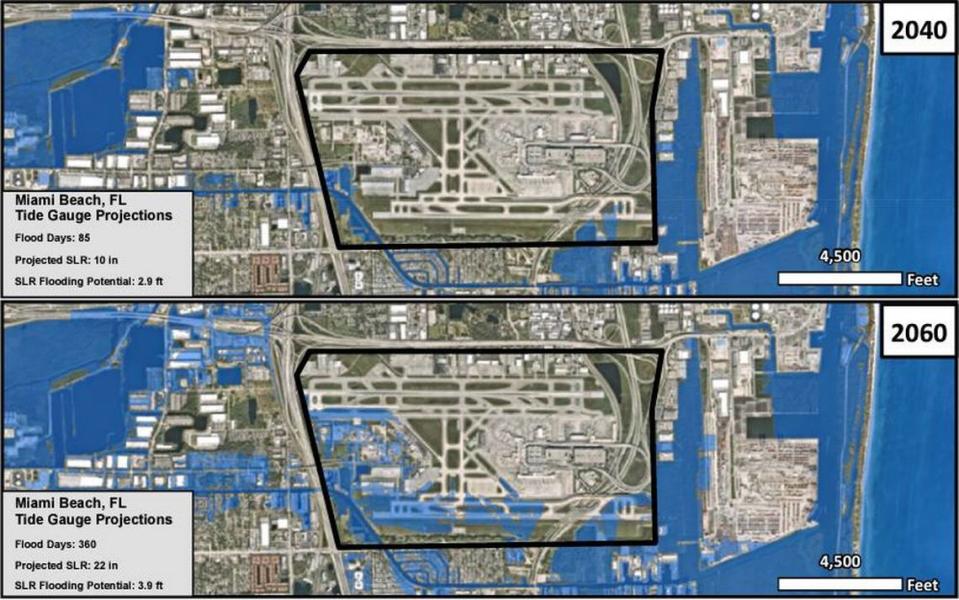
In 2023, the report estimates the airport will see about eight days a year of flooding.
“There’s virtually no natural drainage on some days because of tidal flooding, today. When you go out into the future, the NOAA models are saying the situation is going to get worse,” Slap said.
By 2040, with about a foot of sea rise, that leaps to 85 days a year, according to the report.
With 2 feet of sea rise by 2060, the airport could flood 360 days a year if no action is taken.
“You have to ask yourself, how high do we have to build the runways up to really make a difference and keep the airport there? The answer is they’re going to have to raise them up pretty high,” Slap said. “They’ve got a job on their hands.”
